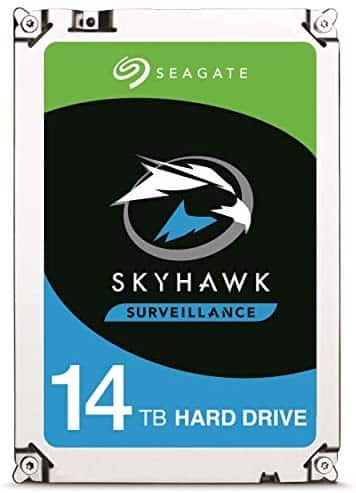Valley Health System is constructing a new hospital in Paramus, New Jersey – presenting an opportunity to transform healthcare delivery for the surrounding communities.
This is the story of the hospital – which is scheduled to open April 14, 2024 – and some of the technologies its IT leaders say will help advance delivery of leading-edge care.
THE PROBLEM
“Our commitment to enhancing the patient experience is encapsulated in our initiative called Transforming Tomorrow,” said Eric Carey, vice president and CIO at Valley Health System.
“This includes a video series aimed at educating both staff and the community about our transformative endeavors, benefiting both patients and staff alike. Our strategic objective is to elevate the current quality and experience of patient care through the use of healthcare technology.
“The envisioned patient experience entails offering a comprehensive set of solutions, granting patients greater control over their environment, involving family and guests in the healing process, minimizing the need to leave the patient room, and creating an overall more personally comfortable atmosphere,” he continued.
Patients will have control over room temperature, lighting and window shades through a pillow speaker. Although seemingly basic, these environmental controls are often unavailable to patients, leading to frequent nurse call button triggers, causing frustration and diverting staff from direct patient care, he noted.
For instance, empowering patients to adjust room temperature via a footwall monitor displaying the current temperature can prevent unnecessary interventions, fostering collaboration between patients and staff.
“The 75-inch footwall monitor, a central focal point of the patient experience, will display clinical information, educational content, care details and entertainment options, and allow physicians to share diagnostic images,” Carey explained. “This serves to keep patients informed and entertained, reducing stress during the recovery process.
“The footwall will also leverage real-time location system (RTLS) badges worn by care providers, triggering the display of entering personnel’s images and roles,” he continued. “This aids patients in recalling interactions, addressing common queries about the presence of specific staff members and enhancing overall patient experience.”
Additional technological features include an augmented artificial intelligence system to prevent patient falls and a companion tablet for online activities, including video calls.
In patient rooms, two-sided nurse servers with supply, medication and soiled linen zones accessible from the hallway streamline operations while maintaining security through proximity-card access. This minimizes disruptions to patient sleep cycles and privacy.
“Effective integration is essential as it ensures staff can effortlessly keep all systems updated.”
Eric Carey, Valley Health System
Recognizing the vital role of family and friends, each room features a dedicated family and guest zone with convertible furniture, power outlets and charging connections. This facilitates patient comfort and support, reducing staff involvement in noncritical issues.
“To enhance infection control, we’ve implemented RTLS at in-room sinks to track handwashing,” Carey said. “Additionally, we’ve replaced curtain pulls with in-wall and in-door sealed blinds, contributing to infection control and providing more workspace in patient rooms.”
PROPOSAL
The main goals and future benefits of the technology implementations are to:
Improve the patient experience
Reduce stress for patients
Improve the care quality and healing cycle
Provide environmental controls to reduce patient frustration and increase staff time for clinical work
Increase patient safety (reduce patient falls, focus on infection control, enhance communication between patients and care providers)
Improve the partnership with patient family, friends and others who participate in the patient care process
Provide current information to patients so they don’t have to wonder about their status
Eliminate interruptions in the patient room
MEETING THE CHALLENGE
All data entry is considered from a single source.
“For example, when data is entered into our Meditech EHR, it is propagated to all downstream systems, eliminating the need for double data entry,” Carey noted. “Therefore, when a nurse documents something, it transfers seamlessly to the footwall, digital door sign, nurse call system, augmented intelligence fall reduction system, clinician smartphone system, etc.
“At Valley, we have extensive experience with integration, making the avoidance of extra work a standard model,” he continued. “We employ direct integration, application programming interfaces, background integrations and several other technologies to facilitate the seamless transfer of data between systems.”
This integration also extends to building management systems (BMS) for environmental controls.
“Effective integration is essential as it ensures staff can effortlessly keep all systems updated,” he added.
ADVICE FOR OTHERS
Carey’s advice for his peers considering similar technology implementations includes:
Involve all levels of the organization, from frontline staff through to top leadership
Involve multiple industry experts in all fields
Include patient advocacy teams
Build a test lab and require vendors to provide test equipment to test integration, functionality and features before contracts are signed
Continually engage staff and leaders to make sure design principles are being met.
Plan, test, refine, repeat
“And plan for the future, not just Day One of opening,” Carey added. “An example of futureproofing in technology is the installation of a network patch panel in each patient room, eliminating the need for rerunning cables for years. This includes spares, which have proven useful even before our official opening.
“Recognizing that a multi-year project introduces new needs, we were able to seamlessly incorporate additional technology without the hassle of running more cables, thanks to the spares,” he continued. “Moreover, when technology is relocated or replaced in a room, a new patch cable can be effortlessly run from the panel to the required location.”
This foresight has resulted in millions of dollars in savings, as staff ran 20 to 24 cables per patient room during the initial infrastructure build when all walls and ceilings were open and obstacle-free. This cost-effective approach will continue to yield significant savings over the years, he concluded.
Follow Bill’s HIT coverage on LinkedIn: Bill Siwicki
Email him: [email protected]
Healthcare IT News is a HIMSS Media publication.

